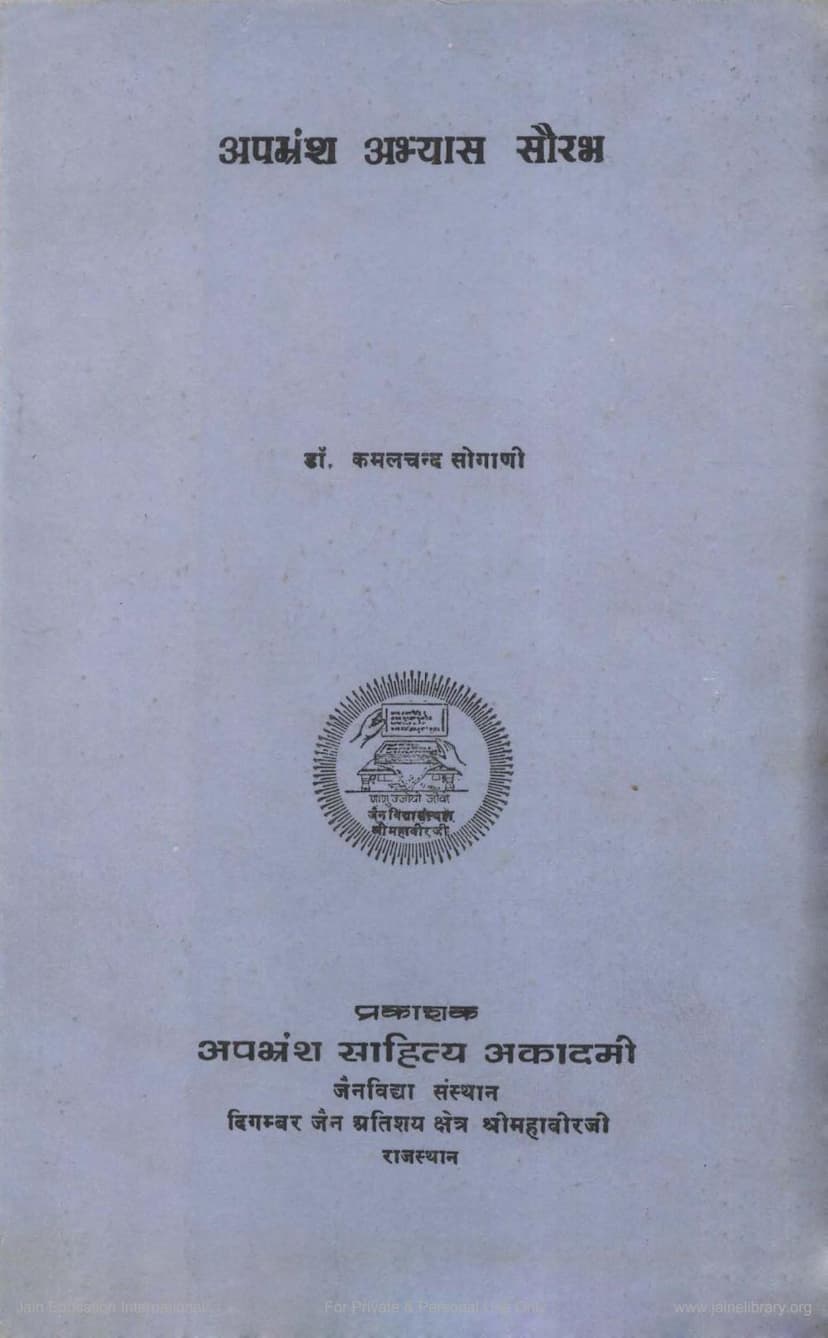Apbhramsa Abhyasa Saurabh
Added to library: September 1, 2025

Summary
I can provide a comprehensive summary of the Jain text "Apbhramsa Abhyasa Saurabh" based on the provided pages.
Book Title: Apbhramsa Abhyasa Saurabh Author: Dr. Kamalchand Sogani Publisher: Apbhramsa Sahitya Academy, Jain Vidya Sansthan, Digambar Jain Atishay Kshetra Shri Mahavirji, Rajasthan. Catalog Link: https://jainqq.org/explore/002697/1
Summary:
"Apbhramsa Abhyasa Saurabh" is a pedagogical resource designed for students and educators interested in learning and teaching the Apabhramsa language. The book is published by the Apabhramsa Sahitya Academy, an initiative of the Jain Vidya Sansthan at the Digambar Jain Atishay Kshetra Shri Mahavirji in Rajasthan.
Key Aspects and Content:
- Purpose and Audience: The book aims to facilitate the study and teaching of Apabhramsa, a language that served as a source for Hindi and other North Indian languages. It is particularly beneficial for those learning through correspondence courses, as offered by the Apabhramsa Sahitya Academy. It also caters to universities looking to incorporate Apabhramsa into their curriculum without requiring students to enroll in the Academy's specific courses.
- Structure: The book is organized into a series of structured exercises (Abhyas). These exercises systematically cover various aspects of Apabhramsa grammar and composition.
- Curriculum Basis: The exercises are based on texts from "Apbhramsa Rachana Saurabh" and "Apbhramsa Kavya Saurabh," with a forthcoming volume titled "Praudh Apbhramsa Rachana Saurabh." This indicates a comprehensive approach to learning the language, progressing from foundational grammar to literary aspects.
- Exercise Content: The exercises (Abhyas 1 through 46 are detailed in the provided pages) cover a wide range of grammatical topics, including:
- Verb Conjugations: Present tense, future tense, past participles (active voice, passive voice), imperative, subjunctive mood, causal verbs, and more.
- Nouns and Pronouns: Declension of nouns (masculine, neuter, feminine), singular and plural forms, case endings (accusative, genitive, etc.), and pronoun usage.
- Sentence Construction (Vakya-rachana): Exercises focus on forming sentences using various grammatical structures.
- Kridanta (Verbal Participles): Different types of kridantas such as past tense, present tense, future tense, causal, and passive voice participles.
- Syntax and Grammar: Exercises on sentence structure, grammatical analysis, and correction of errors.
- Literary Elements: Inclusion of exercises related to vocabulary from Apabhramsa literature, analysis of narrative texts ("Mangaliy Purusho Katha," "Viusihe Puttbahe Kahangue"), and elements of prosody (Chhand) and rhetoric (Alankar).
- Pedagogical Approach: The book emphasizes a practice-based learning approach. It provides ample exercises for students to apply grammatical rules and develop proficiency. The "Apbhramsa Rachana Saurabh" is used as a reference for these exercises, suggesting a structured learning path.
- Importance of Apabhramsa: The introductory sections highlight the historical and linguistic significance of Apabhramsa as the source language for modern Indian languages, including Hindi. It underscores the connection between Apabhramsa and Hindi, stating that understanding Apabhramsa is essential for comprehending Hindi literature and the development of national consciousness and unity.
- Author and Publisher: Dr. Kamalchand Sogani, a former Professor of Philosophy at Sukhadia University, Udaipur, is credited as the author. The publication by the Apbhramsa Sahitya Academy, Jain Vidya Sansthan, indicates a strong connection to Jain religious and academic traditions.
- Publication Details: The book was first published in 1996 with an edition size of 1100 copies. It offers library and student editions at different price points.
In essence, "Apbhramsa Abhyasa Saurabh" is a systematic and comprehensive workbook designed to equip learners with the grammatical and compositional skills necessary to master the Apabhramsa language, recognizing its crucial role in the history of Indian languages and literature.